Cover
Title Page
Copyright Page
Contents
Preface
CHAPTER 1: Semiconductor Diodes
1.1 Introduction
1.2 Semiconductor Materials: Ge, Si, and GaAs
1.3 Covalent Bonding and Intrinsic Materials
1.4 Energy Levels
1.5 n-Type and p-Type Materials
1.6 Semiconductor Diode
1.7 Ideal Versus Practical
1.8 Resistance Levels
1.9 Diode Equivalent Circuits
1.10 Transition and Diffusion Capacitance
1.11 Reverse Recovery Time
1.12 Diode Specification Sheets
1.13 Semiconductor Diode Notation
1.14 Diode Testing
1.15 Zener Diodes
1.16 Light-Emitting Diodes
1.17 Summary
1.18 Computer Analysis
CHAPTER 2: Diode Applications
2.1 Introduction
2.2 Load-Line Analysis
2.3 Series Diode Configurations
2.4 Parallel and Series–Parallel Configurations
2.5 AND/OR Gates
2.6 Sinusoidal Inputs; Half-Wave Rectification
2.7 Full-Wave Rectification
2.8 Clippers
2.9 Clampers
2.10 Networks with a dc and ac Source
2.11 Zener Diodes
2.12 Voltage-Multiplier Circuits
2.13 Practical Applications
2.14 Summary
2.15 Computer Analysis
CHAPTER 3: Bipolar Junction Transistors
3.1 Introduction
3.2 Transistor Construction
3.3 Transistor Operation
3.4 Common-Base Configuration
3.5 Common-Emitter Configuration
3.6 Common-Collector Configuration
3.7 Limits of Operation
3.8 Transistor Specification Sheet
3.9 Transistor Testing
3.10 Transistor Casing and Terminal Identification
3.11 Transistor Development
3.12 Summary
3.13 Computer Analysis
CHAPTER 4: DC Biasing—BJTs
4.1 Introduction
4.2 Operating Point
4.3 Fixed-Bias Configuration
4.4 Emitter-Bias Configuration
4.5 Voltage-Divider Bias Configuration
4.6 Collector Feedback Configuration
4.7 Emitter-Follower Configuration
4.8 Common-Base Configuration
4.9 Miscellaneous Bias Configurations
4.10 Summary Table
4.11 Design Operations
4.12 Multiple BJT Networks
4.13 Current Mirrors
4.14 Current Source Circuits
4.15 pnp Transistors
4.16 Transistor Switching Networks
4.17 Troubleshooting Techniques
4.18 Bias Stabilization
4.19 Practical Applications
4.20 Summary
4.21 Computer Analysis
CHAPTER 5: BJT AC Analysis
5.1 Introduction
5.2 Amplification in the AC Domain
5.3 BJT Transistor Modeling
5.4 The r[sub(e)] Transistor Model
5.5 Common-Emitter Fixed-Bias Configuration
5.6 Voltage-Divider Bias
5.7 CE Emitter-Bias Configuration
5.8 Emitter-Follower Configuration
5.9 Common-Base Configuration
5.10 Collector Feedback Configuration
5.11 Collector DC Feedback Configuration
5.12 Effect of R[sub(L)] and R[sub(s)]
5.13 Determining the Current Gain
5.14 Summary Tables
5.15 Two-Port Systems Approach
5.16 Cascaded Systems
5.17 Darlington Connection
5.18 Feedback Pair
5.19 The Hybrid Equivalent Model
5.20 Approximate Hybrid Equivalent Circuit
5.21 Complete Hybrid Equivalent Model
5.22 Hybrid π Model
5.23 Variations of Transistor Parameters
5.24 Troubleshooting
5.25 Practical Applications
5.26 Summary
5.27 Computer Analysis
CHAPTER 6: Field-Effect Transistors
6.1 Introduction
6.2 Construction and Characteristics of JFETs
6.3 Transfer Characteristics
6.4 Specification Sheets (JFETs)
6.5 Instrumentation
6.6 Important Relationships
6.7 Depletion-Type MOSFET
6.8 Enhancement-Type MOSFET
6.9 MOSFET Handling
6.10 VMOS and UMOS Power and MOSFETs
6.11 CMOS
6.12 MESFETs
6.13 Summary Table
6.14 Summary
6.15 Computer Analysis
CHAPTER 7: FET Biasing
7.1 Introduction
7.2 Fixed-Bias Configuration
7.3 Self-Bias Configuration
7.4 Voltage-Divider Biasing
7.5 Common-Gate Configuration
7.6 Special Case V[Sub(GS)][Sub(Q)] = 0 V
7.7 Depletion-Type MOSFETs
7.8 Enhancement-Type MOSFETs
7.9 Summary Table
7.10 Combination Networks
7.11 Design
7.12 Troubleshooting
7.13 p-Channel FETs
7.14 Universal JFET Bias Curve
7.15 Practical Applications
7.16 Summary
7.17 Computer Analysis
CHAPTER 8: FET Amplifiers
8.1 Introduction
8.2 JFET Small-Signal Model
8.3 Fixed-Bias Configuration
8.4 Self-Bias Configuration
8.5 Voltage-Divider Configuration
8.6 Common-Gate Configuration
8.7 Source-Follower (Common-Drain) Configuration
8.8 Depletion-Type MOSFETs
8.9 Enhancement-Type MOSFETs
8.10 E-MOSFET Drain-Feedback Configuration
8.11 E-MOSFET Voltage-Divider Configuration
8.12 Designing FET Amplifier Networks
8.13 Summary Table
8.14 Effect of R[sub(L)] and R[sub(sig)]
8.15 Cascade Configuration
8.16 Troubleshooting
8.17 Practical Applications
8.18 Summary
8.19 Computer Analysis
CHAPTER 9: BJT and JFET Frequency Response
9.1 Introduction
9.2 Logarithms
9.3 Decibels
9.4 General Frequency Considerations
9.5 Normalization Process
9.6 Low-Frequency Analysis—Bode Plot
9.7 Low-Frequency Response—BJT Amplifier with R[sub(L)]
9.8 Impact of R[sub(s)] on the BJT Low-Frequency Response
9.9 Low-Frequency Response—FET Amplifier
9.10 Miller Effect Capacitance
9.11 High-Frequency Response—BJT Amplifier
9.12 High-Frequency Response—FET Amplifier
9.13 Multistage Frequency Effects
9.14 Square-Wave Testing
9.15 Summary
9.16 Computer Analysis
CHAPTER 10: Operational Amplifiers
10.1 Introduction
10.2 Differential Amplifier Circuit
10.3 BiFET, BiMOS, and CMOS Differential Amplifier Circuits
10.4 Op-Amp Basics
10.5 Practical Op-Amp Circuits
10.6 Op-Amp Specifications—DC Offset Parameters
10.7 Op-Amp Specifications—Frequency Parameters
10.8 Op-Amp Unit Specifications
10.9 Differential and Common-Mode Operation
10.10 Summary
10.11 Computer Analysis
CHAPTER 11: Op-Amp Applications
11.1 Constant-Gain Multiplier
11.2 Voltage Summing
11.3 Voltage Buffer
11.4 Controlled Sources
11.5 Instrumentation Circuits
11.6 Active Filters
11.7 Summary
11.8 Computer Analysis
CHAPTER 12: Power Amplifiers
12.1 Introduction—Definitions and Amplifier Types
12.2 Series-Fed Class A Amplifier
12.3 Transformer-Coupled Class A Amplifier
12.4 Class B Amplifier Operation
12.5 Class B Amplifier Circuits
12.6 Amplifier Distortion
12.7 Power Transistor Heat Sinking
12.8 Class C and Class D Amplifiers
12.9 Summary
12.10 Computer Analysis
CHAPTER 13: Linear-Digital ICs
13.1 Introduction
13.2 Comparator Unit Operation
13.3 Digital–Analog Converters
13.4 Timer IC Unit Operation
13.5 Voltage-Controlled Oscillator
13.6 Phase-Locked Loop
13.7 Interfacing Circuitry
13.8 Summary
13.9 Computer Analysis
CHAPTER 14: Feedback and Oscillator Circuits
14.1 Feedback Concepts
14.2 Feedback Connection Types
14.3 Practical Feedback Circuits
14.4 Feedback Amplifier—Phase and Frequency Considerations
14.5 Oscillator Operation
14.6 Phase-Shift Oscillator
14.7 Wien Bridge Oscillator
14.8 Tuned Oscillator Circuit
14.9 Crystal Oscillator
14.10 Unijunction Oscillator
14.11 Summary
14.12 Computer Analysis
CHAPTER 15: Power Supplies (Voltage Regulators)
15.1 Introduction
15.2 General Filter Considerations
15.3 Capacitor Filter
15.4 RC Filter
15.5 Discrete Transistor Voltage Regulation
15.6 IC Voltage Regulators
15.7 Practical Applications
15.8 Summary
15.9 Computer Analysis
CHAPTER 16: Other Two-Terminal Devices
16.1 Introduction
16.2 Schottky Barrier (Hot-Carrier) Diodes
16.3 Varactor (Varicap) Diodes
16.4 Solar Cells
16.5 Photodiodes
16.6 Photoconductive Cells
16.7 IR Emitters
16.8 Liquid-Crystal Displays
16.9 Thermistors
16.10 Tunnel Diodes
16.11 Summary
CHAPTER 17: pnpn and Other Devices
17.1 Introduction
17.2 Silicon-Controlled Rectifier
17.3 Basic Silicon-Controlled Rectifier Operation
17.4 SCR Characteristics and Ratings
17.5 SCR Applications
17.6 Silicon-Controlled Switch
17.7 Gate Turn-Off Switch
17.8 Light-Activated SCR
17.9 Shockley Diode
17.10 Diac
17.11 Triac
17.12 Unijunction Transistor
17.13 Phototransistors
17.14 Opto-Isolators
17.15 Programmable Unijunction Transistor
17.16 Summary
Appendix A: Hybrid Parameters—Graphical Determinations and Conversion Equations (Exact and Approximate)
A.1 Graphical Determination of the h-Parameters
A.2 Exact Conversion Equations
A.3 Approximate Conversion Equations
Appendix B: Ripple Factor and Voltage Calculations
B.1 Ripple Factor of Rectifier
B.2 Ripple Voltage of Capacitor Filter
B.3 Relation of V[sub(dc)] and V[sub(m)] to Ripple r
B.4 Relation of V[sub(r)](rms) and V[sub(m)] to Ripple r
B.5 Relation Connecting Conduction Angle, Percentage Ripple, and I[sub(peak)] /I[sub(dc)] for Rectifier-Capacitor Filter Circuits
Appendix C: Charts and Tables
Appendix D: Solutions to Selected Odd-Numbered Problems
Index
A
B
C
D
E
F
G
H
I
J
K
L
M
N
O
P
Q
R
S
T
U
V
W
Z
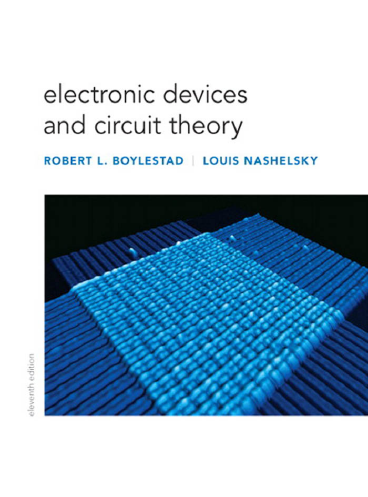
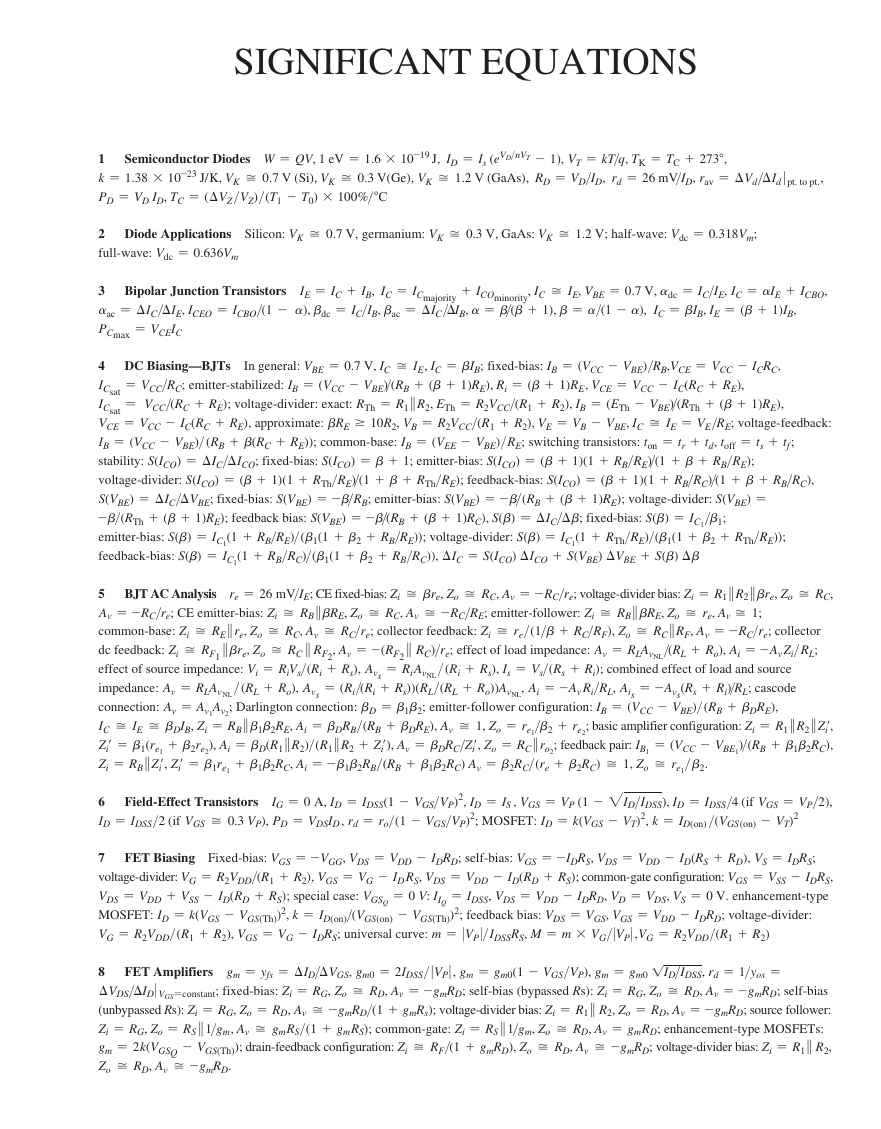
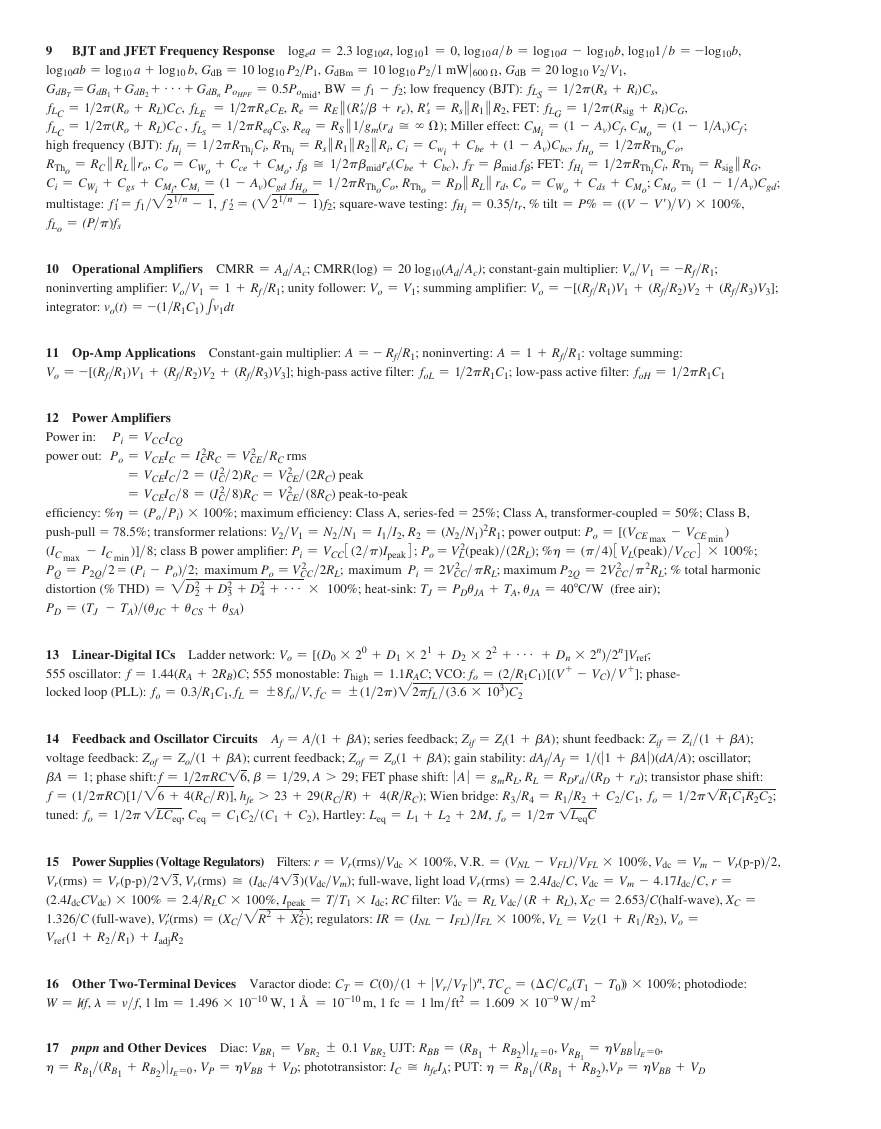
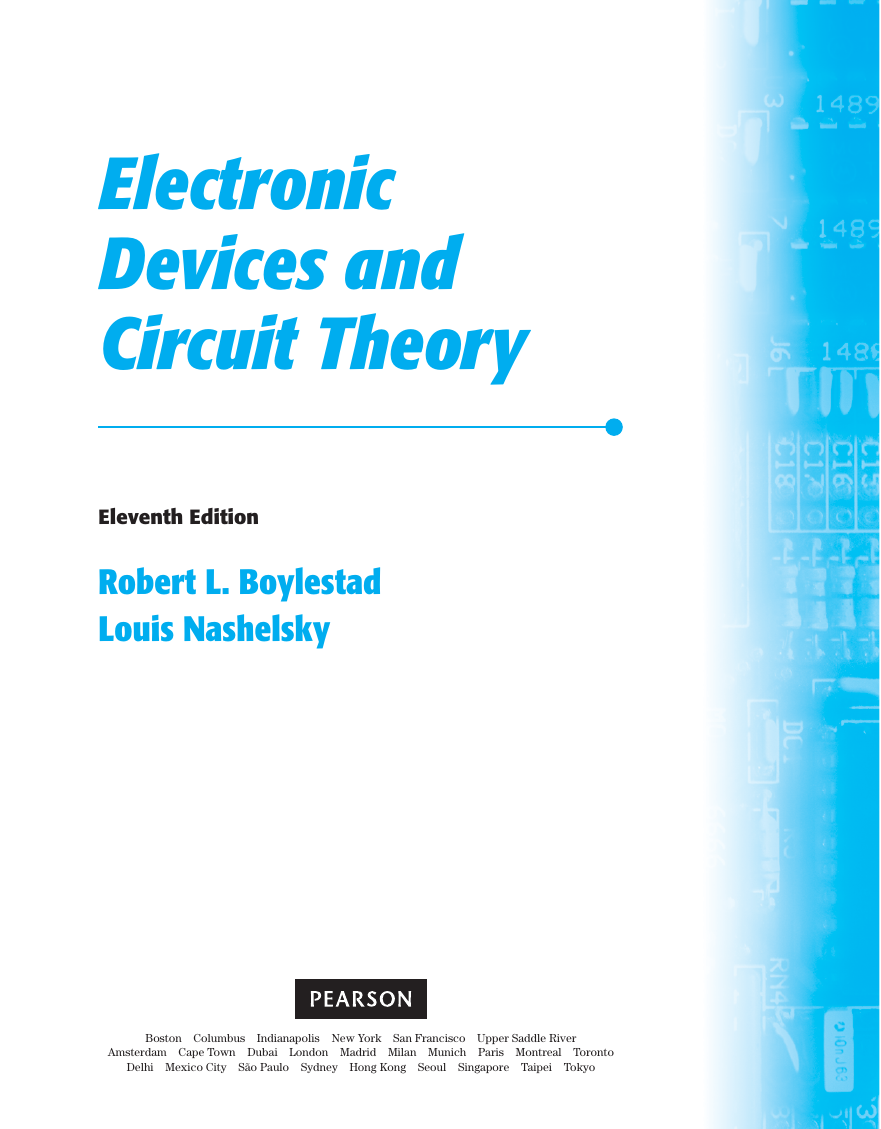



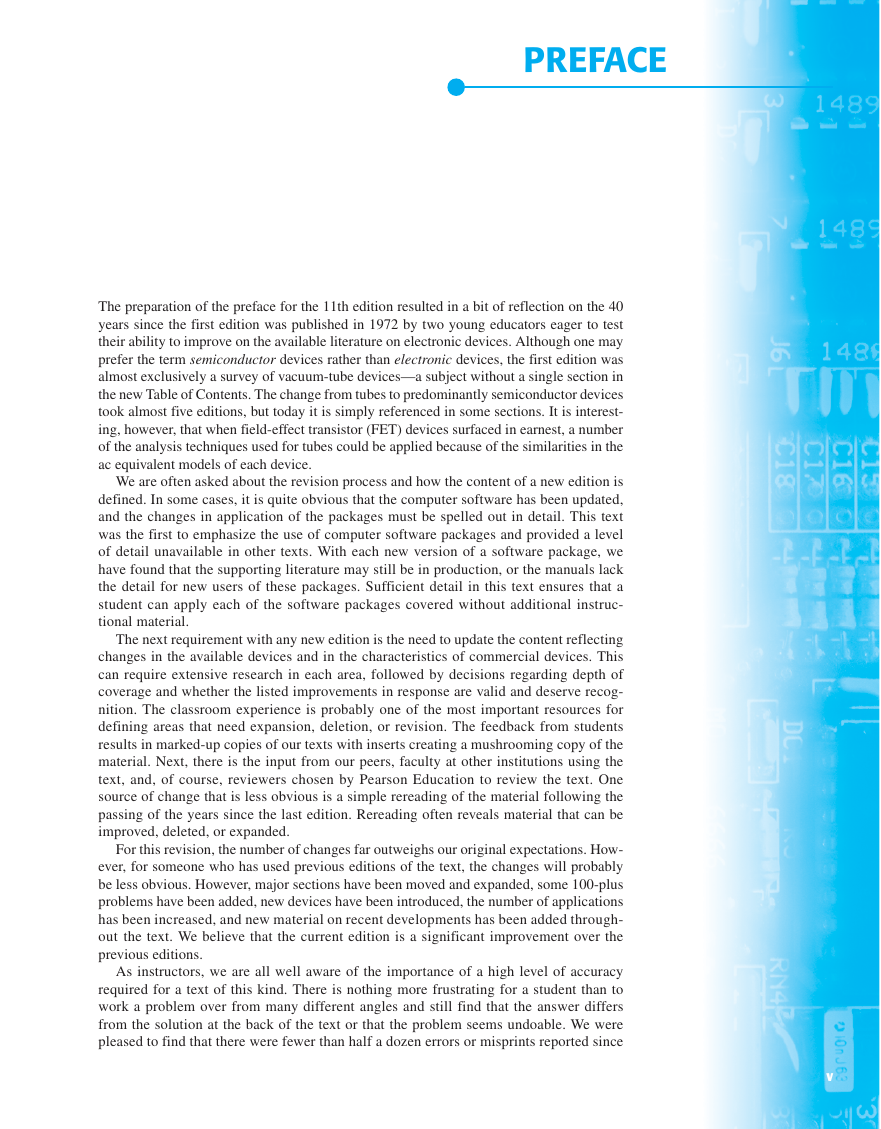








 2023年江西萍乡中考道德与法治真题及答案.doc
2023年江西萍乡中考道德与法治真题及答案.doc 2012年重庆南川中考生物真题及答案.doc
2012年重庆南川中考生物真题及答案.doc 2013年江西师范大学地理学综合及文艺理论基础考研真题.doc
2013年江西师范大学地理学综合及文艺理论基础考研真题.doc 2020年四川甘孜小升初语文真题及答案I卷.doc
2020年四川甘孜小升初语文真题及答案I卷.doc 2020年注册岩土工程师专业基础考试真题及答案.doc
2020年注册岩土工程师专业基础考试真题及答案.doc 2023-2024学年福建省厦门市九年级上学期数学月考试题及答案.doc
2023-2024学年福建省厦门市九年级上学期数学月考试题及答案.doc 2021-2022学年辽宁省沈阳市大东区九年级上学期语文期末试题及答案.doc
2021-2022学年辽宁省沈阳市大东区九年级上学期语文期末试题及答案.doc 2022-2023学年北京东城区初三第一学期物理期末试卷及答案.doc
2022-2023学年北京东城区初三第一学期物理期末试卷及答案.doc 2018上半年江西教师资格初中地理学科知识与教学能力真题及答案.doc
2018上半年江西教师资格初中地理学科知识与教学能力真题及答案.doc 2012年河北国家公务员申论考试真题及答案-省级.doc
2012年河北国家公务员申论考试真题及答案-省级.doc 2020-2021学年江苏省扬州市江都区邵樊片九年级上学期数学第一次质量检测试题及答案.doc
2020-2021学年江苏省扬州市江都区邵樊片九年级上学期数学第一次质量检测试题及答案.doc 2022下半年黑龙江教师资格证中学综合素质真题及答案.doc
2022下半年黑龙江教师资格证中学综合素质真题及答案.doc